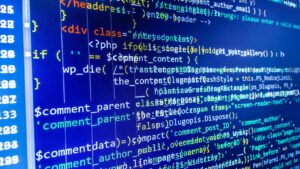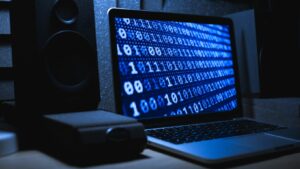Python programming stands as a beacon for both beginners and seasoned developers looking to enhance their software development skills. Renowned for its simplicity and readability, Python makes programming accessible and fun. With its versatile application across different industries, understanding the fundamentals of Python is more valuable than ever.
This article delves into the core principles that underpin Python programming. From its syntax and data structures to modules and error handling, we’ll explore how these elements combine to create robust and efficient applications. Whether you’re starting your coding journey or aiming to refine your programming prowess, grasping these fundamentals is your first step towards mastering Python.
Python Programming Fundamentals
What Is Python?
Python is a high-level, interpreted programming language known for its clear syntax and readability. Guido van Rossum developed it in the late 1980s, and it has since become one of the most popular languages used across diverse fields from web development to data analysis. Python’s design philosophy emphasizes code readability with its use of significant whitespace. Moreover, Python supports multiple programming paradigms, including procedural, object-oriented, and functional programming.
Why Learn Python?
Python offers several advantages that make it an excellent choice for beginners and experienced developers alike. Firstly, its syntax is straightforward, making it easy to learn and use. Python’s code is often described as nearly as readable as plain English, which reduces the cognitive load for new programmers. Secondly, Python has a vast standard library and a vibrant community. This community provides an extensive range of modules and packages that simplify tasks ranging from web development to data analysis. Thirdly, Python’s versatility allows developers to work in various software development areas without needing to learn a new language. Additionally, Python programmers enjoy high demand in the job market, given the language’s robust application in growth areas such as machine learning, artificial intelligence, and big data.
Key Concepts in Python Programming
Variables and Data Types
 Variables in Python store data that a program can manipulate. They act as placeholders or containers for values such as numbers, strings, or more complex objects. Python is dynamically typed, meaning the interpreter identifies the data type automatically when a program is run. This characteristic simplifies programming, as developers don’t declare variable types explicitly.
Variables in Python store data that a program can manipulate. They act as placeholders or containers for values such as numbers, strings, or more complex objects. Python is dynamically typed, meaning the interpreter identifies the data type automatically when a program is run. This characteristic simplifies programming, as developers don’t declare variable types explicitly.
Common data types in Python include:
- Integers: Whole numbers without a fractional part, such as 42 or -10.
- Floats: Numbers that include a decimal point, exemplified by 3.14 or 0.001.
- Strings: Sequences of characters, usually enclosed in quotes. Examples include “Hello, world!” or “Python”.
- Booleans: True or False values, which are crucial for conditional statements.
- Lists and Tuples: Ordered collections of items, where lists are mutable (items can be changed) and tuples are immutable (items cannot be altered once set).
- Dictionaries: Collections of key-value pairs, like { “name”: “John”, “age”: 30 }, which are highly useful for structuring data.
Core Python Syntax Essentials
Writing Your First Python Script
 Creating your first Python script introduces you to the fundamental building blocks of programming in this versatile language. The script usually begins with a simple command like printing a greeting or calculating a mathematical function. Here’s a basic outline to get started:
Creating your first Python script introduces you to the fundamental building blocks of programming in this versatile language. The script usually begins with a simple command like printing a greeting or calculating a mathematical function. Here’s a basic outline to get started:
- Open a Text Editor: Use any text editor like VSCode or Sublime Text.
- Write a Print Statement: Type
print("Hello, world!")which is often the first line of code beginners learn. - Save the File: Save the file with a
.pyextension, for example,hello.py. - Run the Script: Execute the script through the command line by typing
python hello.py.
When executed, this script outputs ‘Hello, world!’ to the console, confirming the script functions correctly, and offers a solid foundation on which to build more complex programs.
Common Syntax Mistakes to Avoid
 When learning Python, it’s crucial to recognize common syntax mistakes for smoother coding sessions. Below are several frequent errors that tend to occur:
When learning Python, it’s crucial to recognize common syntax mistakes for smoother coding sessions. Below are several frequent errors that tend to occur:
- Incorrect Indentation: Python uses indentation to define the scope, such as within loops, conditions, or functions. Not maintaining consistent spaces or tabs can lead to an
IndentationError. - Misplacing Colons: After defining control structures like
if,for, andwhile, a colon (:) is mandatory. Forgetting it causes aSyntaxError. - Typing Errors in Keywords: Miswriting Python keywords like
for,while,break, etc., will prompt aNameError. - Mismatched Quotes for Strings: When using quotes for strings, ensure they’re consistent. For example, starting with a single quote and ending with a double-quote results in a syntax error.
By attentively avoiding these common pitfalls, new Python programmers set themselves up for success, reducing frustration and increasing efficiency as they delve deeper into more sophisticated programming tasks.

